Find Help
More Items From Ergsy search
-
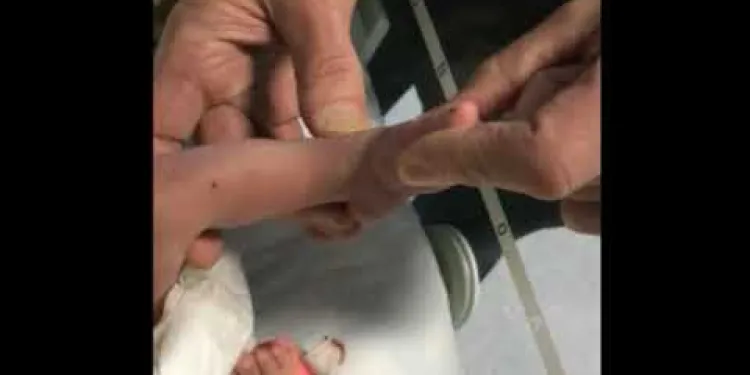
Parent guide to club foot stretches: Step 1
Relevance: 100%
-
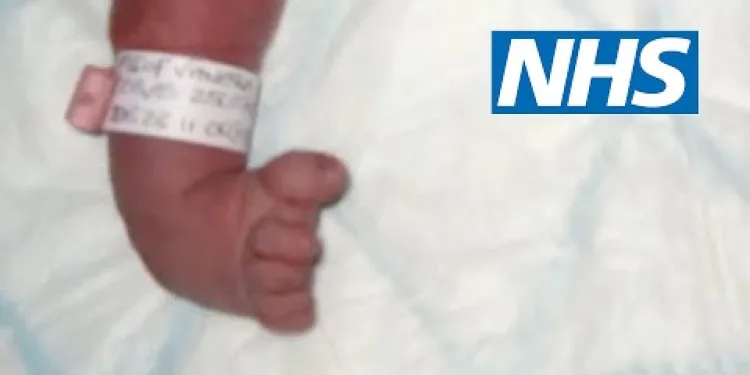
Club foot | NHS
Relevance: 80%
-
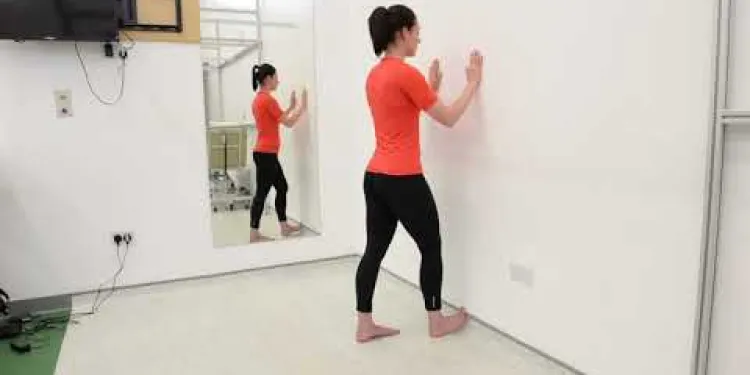
Plantar Fascia Wall Stretch
Relevance: 48%
-
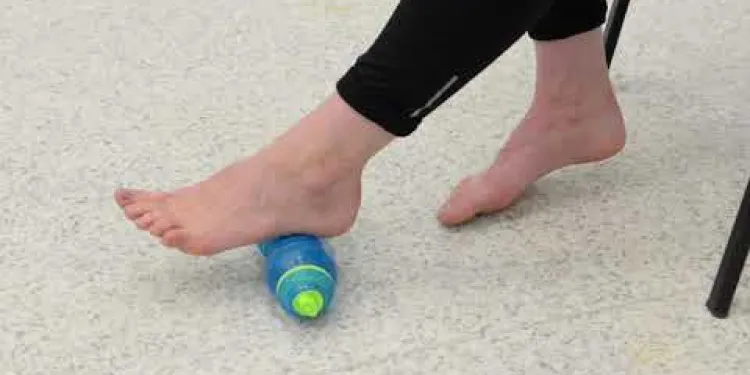
Foot Pain
Relevance: 44%
-

Back stretches | NHS
Relevance: 42%
-
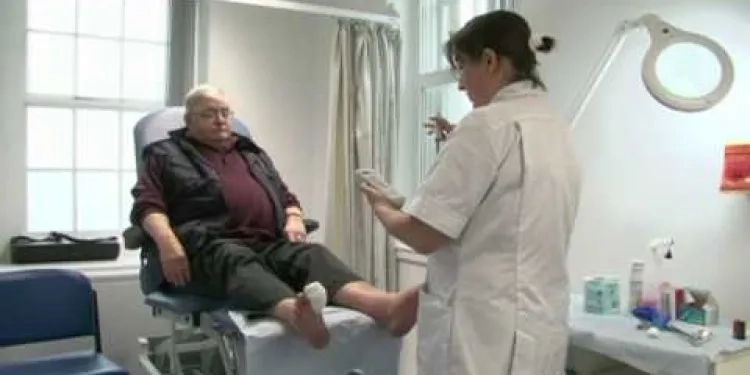
Diabetic Foot Conditions Podiatrist
Relevance: 38%
-
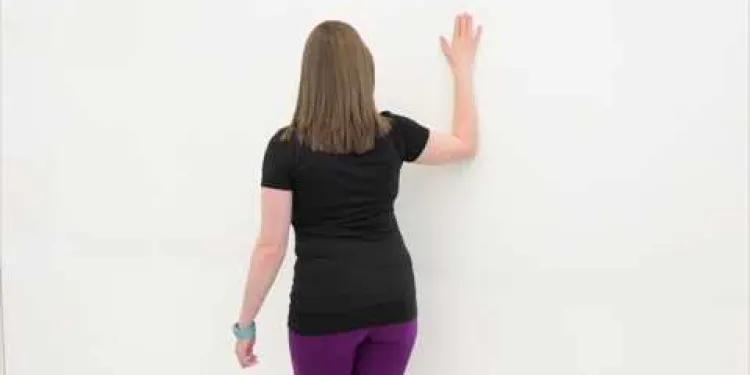
Frozen Shoulder Anterior Shoulder Stretch
Relevance: 34%
-
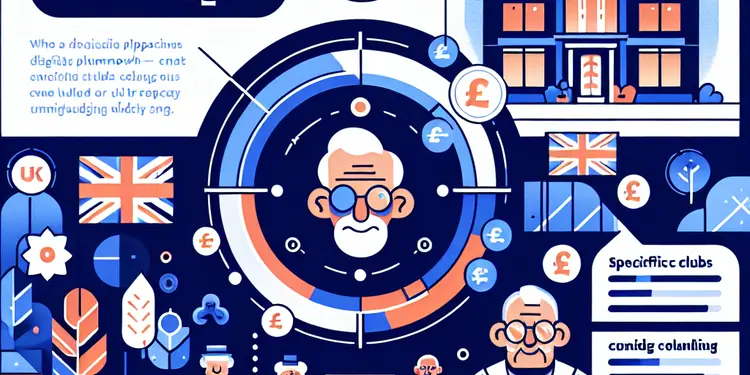
Are there specific clubs that welcome older adults?
Relevance: 27%
-
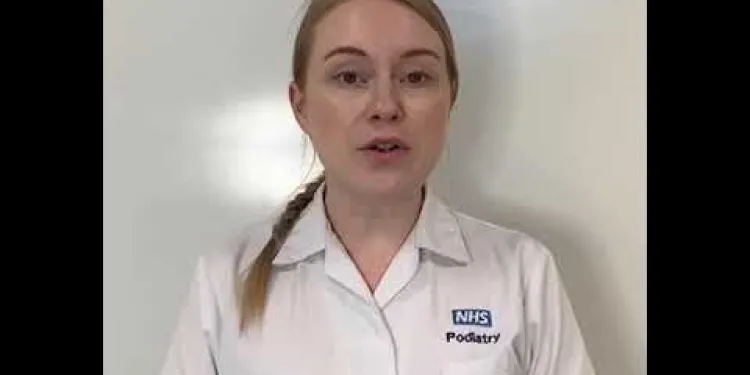
Self care for your feet - Podiatrist
Relevance: 24%
-
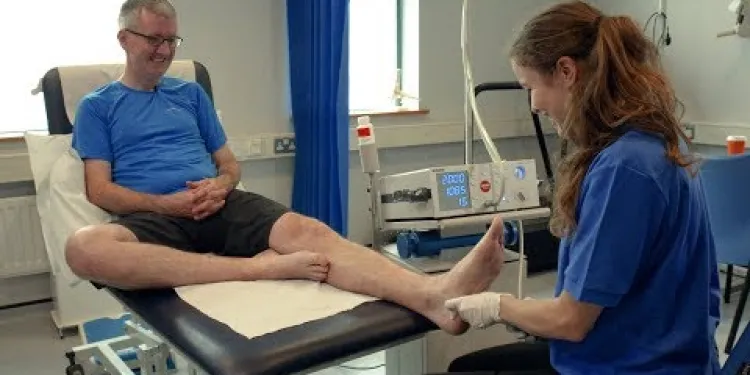
Plantar fasciitis
Relevance: 21%
-
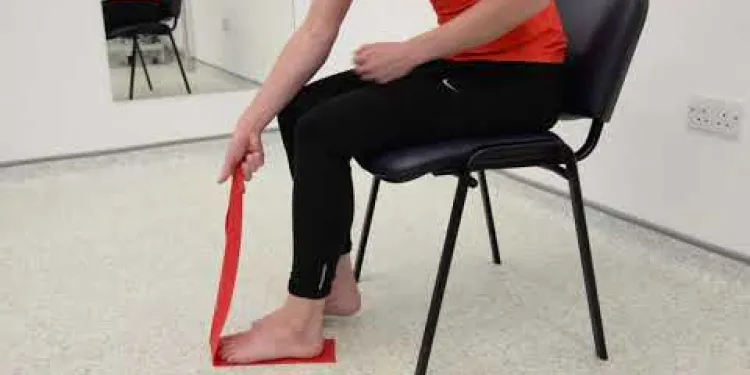
Plantar Fascia Intrinsic Theraband Strengthening Exercise
Relevance: 20%
-
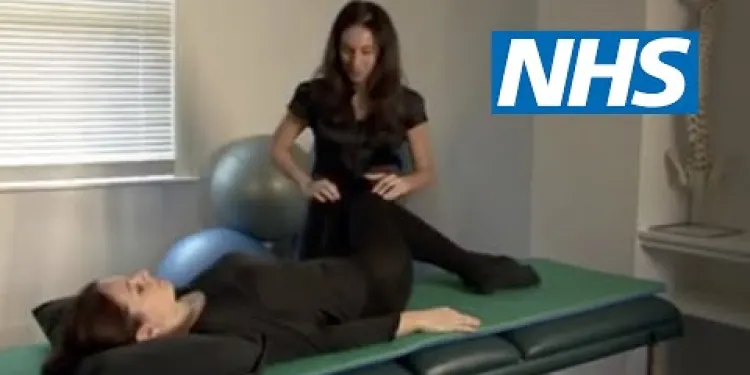
Exercises for sciatica: piriformis syndrome | NHS
Relevance: 20%
-
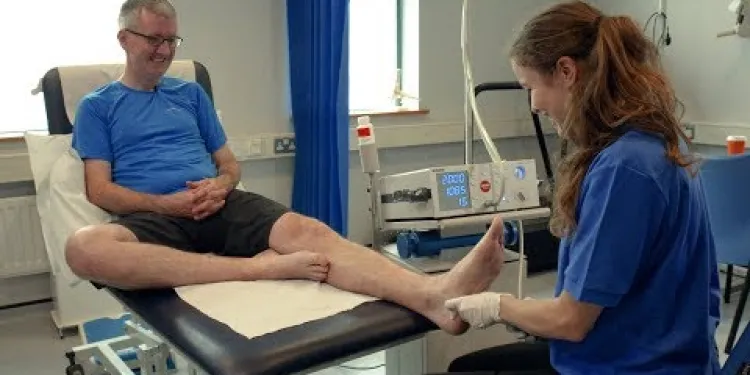
Plantar fasciitis
Relevance: 19%
-
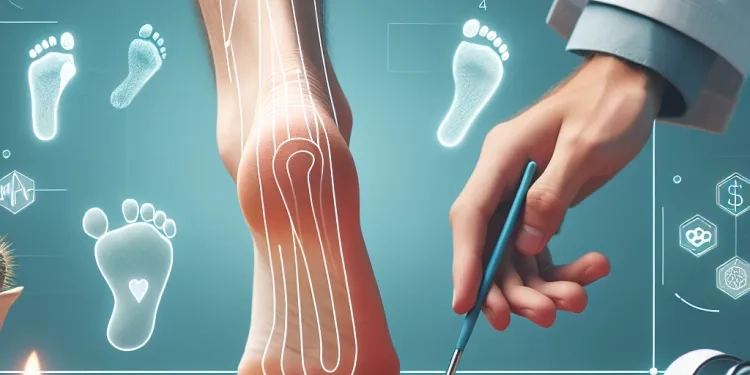
NHS Looking after your feet - Podiatrist https://youtu.be/8J1v6K21ykc
Relevance: 18%
-
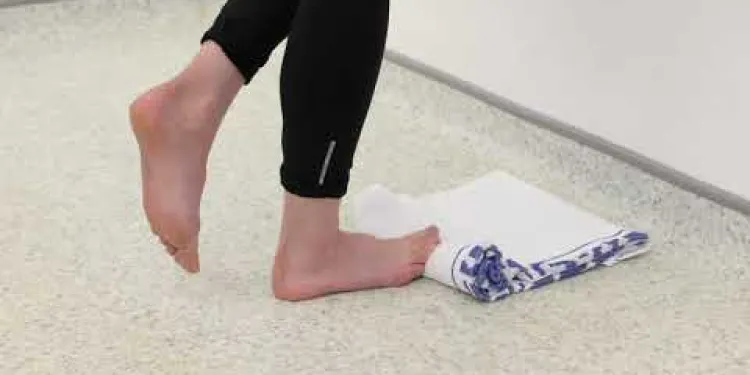
Plantar Fascia Loading Exercise (High Load Exercise)
Relevance: 18%
-
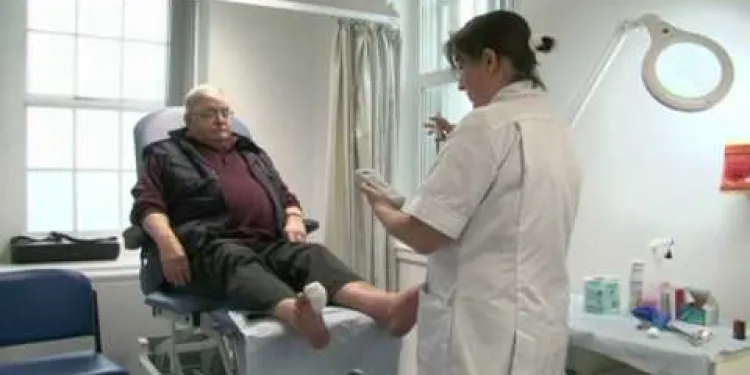
Diabetes Care - Preventing Amputations
Relevance: 18%
-
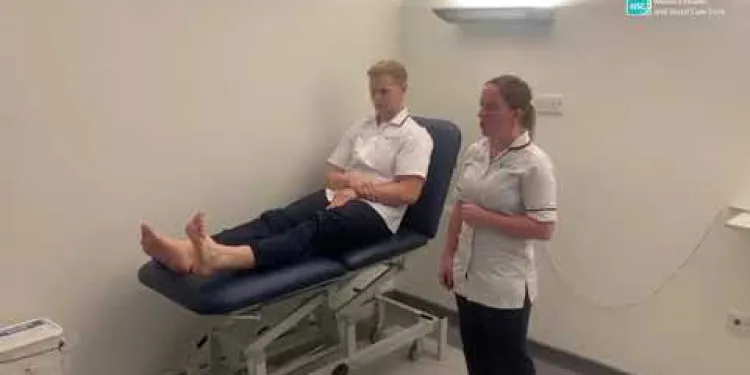
Physiotherapy Exercises following an Ankle Fracture
Relevance: 17%
-
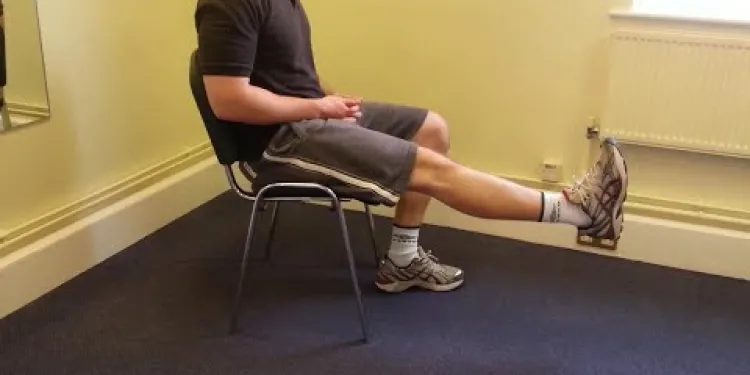
Knee Care Exercises
Relevance: 17%
-

Podiatrist Fungal feet - fungal infection of skin and nails and how to prevent fungal infection in feet
Relevance: 17%
-
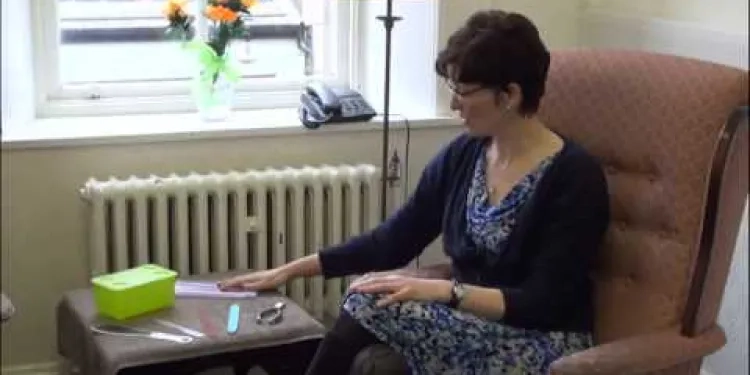
Podiatrist Personal Footcare
Relevance: 17%
-
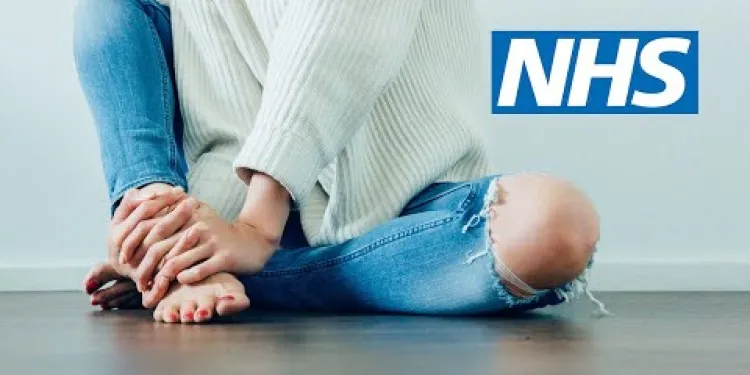
Heel pain | NHS
Relevance: 17%
-
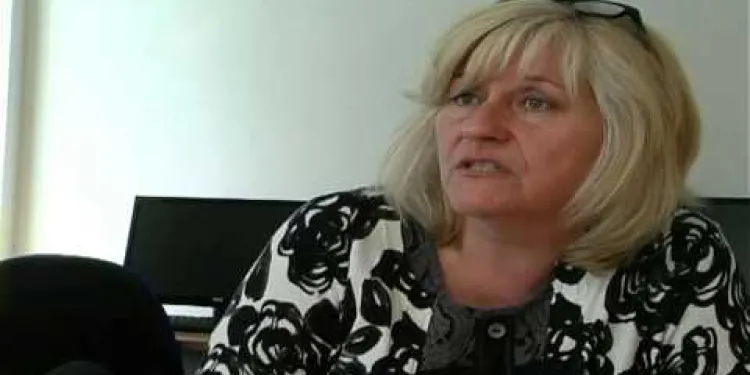
NHS Ayrshire and CVO East Ayrshire - ‘Feet First – Podiatry Services in East Ayrshire’
Relevance: 16%
-
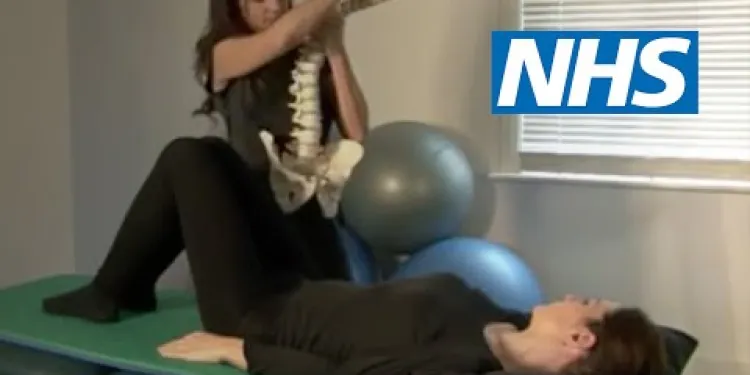
Exercises for sciatica: herniated or slipped disc | NHS
Relevance: 15%
-
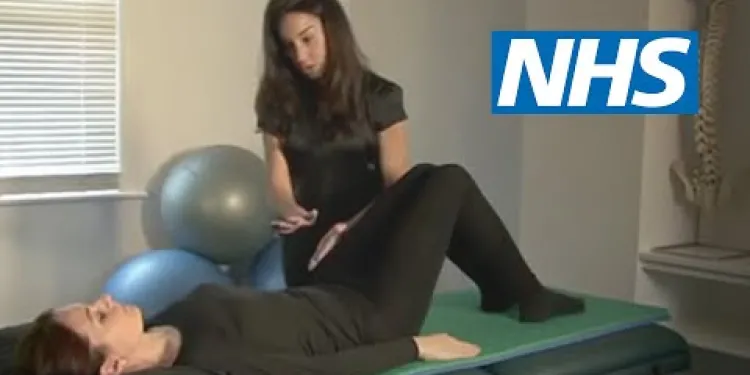
Exercises for sciatica: degenerative disc disease | NHS
Relevance: 13%
-

What complications are associated with Type 2 Diabetes?
Relevance: 13%
-
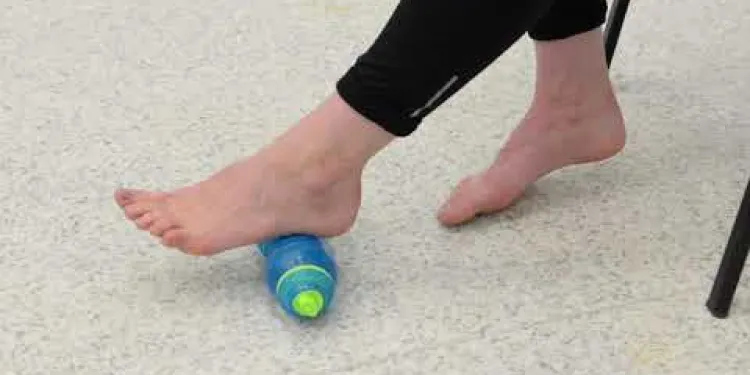
Plantar Fascia Cold Therapy
Relevance: 13%
-
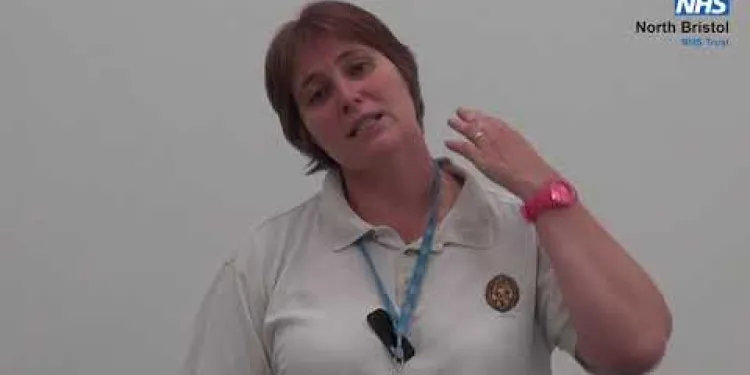
Neck Exercises
Relevance: 13%
-
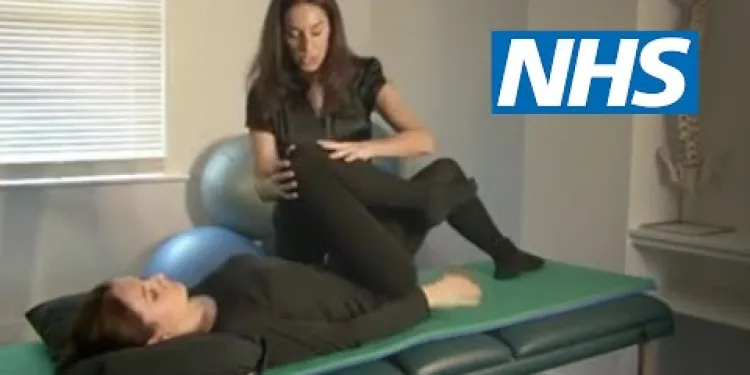
Exercises for sciatica: spinal stenosis | NHS
Relevance: 13%
-

Are there specific exercises that can help with Carpal Tunnel Syndrome?
Relevance: 12%
-
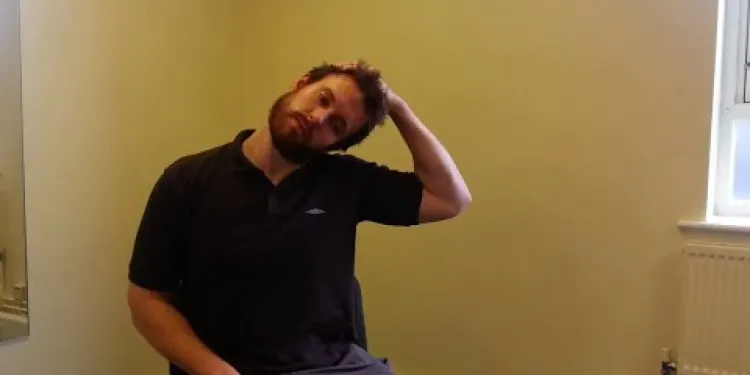
Neck Care Exercises
Relevance: 12%
-
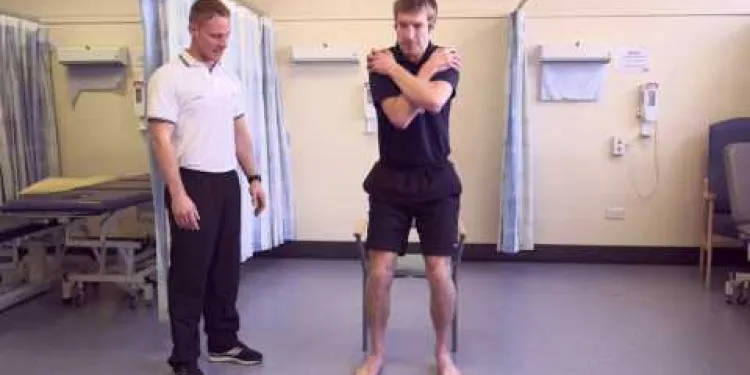
Exercises to help your lateral hip pain
Relevance: 12%
-
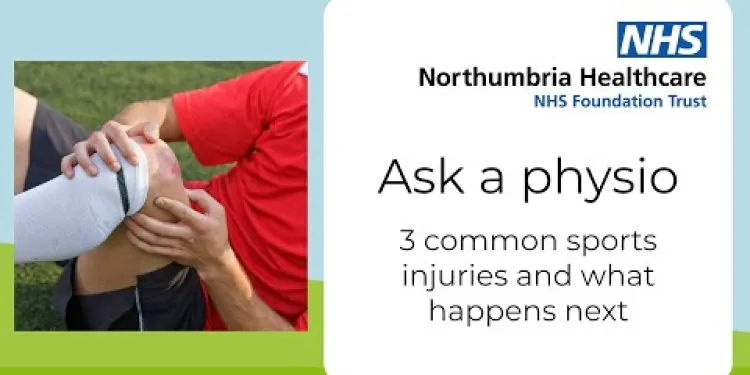
Ask a physio: 3 common sports injuries and what happens next
Relevance: 11%
-

How can older people find hobby groups that align with their interests?
Relevance: 11%
-

Where can AEDs typically be found?
Relevance: 11%
-

Self-care for sprains and strains
Relevance: 11%
-

How can older adults find local hobby groups?
Relevance: 11%
-
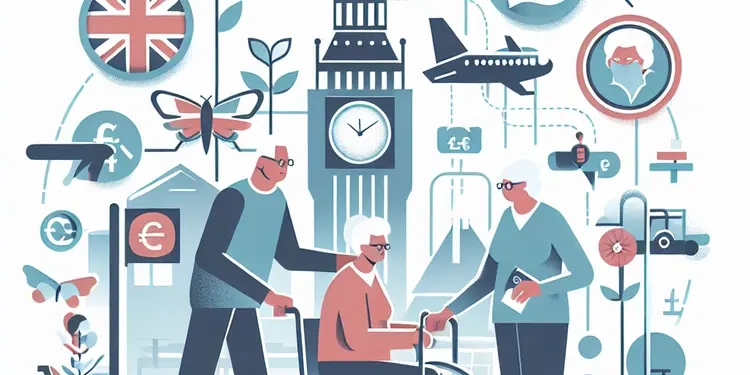
How can older people find new hobbies and groups?
Relevance: 10%
-

How can I prevent Carpal Tunnel Syndrome?
Relevance: 10%
-
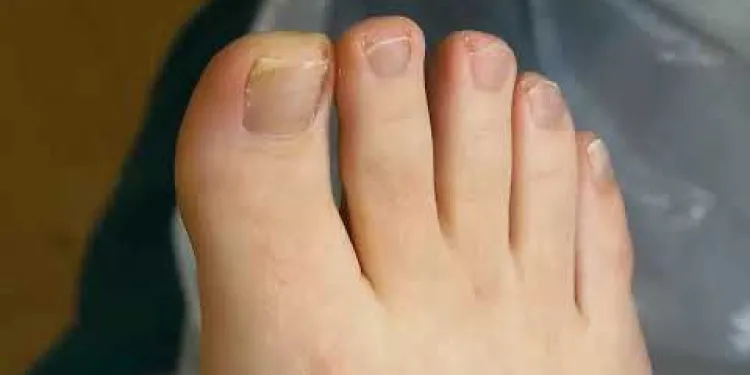
How to treat an ingrowing toenail / Involuted nail
Relevance: 10%
-

What role do libraries play in helping older adults find hobbies?
Relevance: 10%
Parent Guide to Club Foot Stretches
Understanding Club Foot
Club foot, also known as Talipes Equinovarus (TEV), is a congenital condition where one or both feet are twisted out of shape or position. It's important for parents in the UK to understand the nature of this condition to provide the necessary support for their children. Early intervention with stretching exercises can significantly improve foot alignment and function.
Step 1: Preparing for the Stretches
Before starting with the stretches, ensure your child is in a comfortable, relaxed position. It’s often helpful to perform these exercises during times when your child is naturally more relaxed, such as after a warm bath. Having a soft blanket or cushion can provide additional comfort.
Step 2: Basic Foot Stretch
1. Positioning: Gently hold your child's foot with one hand supporting the heel and the other hand holding the forefoot.
2. Stretching: Carefully move the foot upward to align with the shin (dorsiflexion). It's important to be gentle and never force the movement. Hold the stretch for about 15-30 seconds.
3. Repetition: Repeat this stretch 3-5 times, ensuring your child remains calm and comfortable throughout the process.
Step 3: Inward and Outward Stretches
1. Inward Stretch: With one hand steadying the ankle, gently move the sole of your child's foot inward. Ensure the movement is smooth and hold for 15-30 seconds.
2. Outward Stretch: Similar to the inward stretch, but move the sole of the foot outward. Hold this position for 15-30 seconds as well.
3. Repetition: Repeat these inward and outward stretches 3-5 times for each foot.
Step 4: Rotational Stretch
1. Positioning: Hold your child's foot with both hands, one hand on the heel and the other on the toes.
2. Rotation: Gently rotate the foot in a circular motion, first clockwise and then counterclockwise. This helps in improving the flexibility and overall movement.
3. Time: Perform this rotation for about 1-2 minutes in each direction.
Tips for Parents
- Consistency: Regular stretching exercises are crucial. Aim to perform these stretches at least twice a day.
- Comfort: Ensure your child is as comfortable as possible during these exercises. Distract them with toys or gentle music if necessary.
- Guidance: Regularly consult with your child’s physiotherapist or orthopaedic specialist. They can provide additional exercises tailored specifically for your child’s condition.
With patience and consistent effort, these stretching exercises can greatly help in managing and improving club foot in children. Always follow the advice of healthcare professionals for the best outcomes.
Parent Guide to Club Foot Stretches
Understanding Club Foot
Club foot is when a baby's foot turns inwards. This is called Talipes Equinovarus (TEV). It can happen to one or both feet. Parents need to know about club foot to help their child. Doing stretches early can help the foot move and grow better.
Step 1: Preparing for the Stretches
Before starting stretches, make sure your child is comfortable. It might help to do stretches after a warm bath when they are relaxed. A soft blanket or cushion can make it more comfy.
Step 2: Basic Foot Stretch
1. Positioning: Hold your child's foot with one hand under the heel and the other on the front part of the foot.
2. Stretching: Gently move the foot up towards the leg. Be soft and do not push too hard. Hold for 15-30 seconds.
3. Repetition: Do this stretch 3-5 times. Keep your child calm and happy.
Step 3: Inward and Outward Stretches
1. Inward Stretch: Hold the ankle with one hand. Gently move the bottom of the foot inward. Hold for 15-30 seconds.
2. Outward Stretch: Do the same thing, but move the foot outward. Hold for 15-30 seconds.
3. Repetition: Do these inward and outward stretches 3-5 times for each foot.
Step 4: Rotational Stretch
1. Positioning: Hold the foot with both hands. One on the heel, the other on the toes.
2. Rotation: Gently turn the foot in circles. First one way, then the other. This makes the foot more flexible.
3. Time: Do this for 1-2 minutes each way.
Tips for Parents
- Consistency: Do these stretches every day. Try to do them at least twice a day.
- Comfort: Make sure your child feels good during the exercises. Use toys or play gentle music to keep them happy.
- Guidance: Talk to your child’s doctor or therapist often. They can give you more exercises to help your child.
With patience and regular practice, these exercises can help children with club foot. Always listen to your healthcare professionals to get the best results.
Frequently Asked Questions
What is club foot?
Club foot, also known as talipes equinovarus, is a congenital condition where a baby’s foot or feet turn inward and downward.
How common is club foot?
Club foot affects about 1 in 1,000 newborns in the United Kingdom.
What are the causes of club foot?
The exact cause of club foot is unknown, but it is believed to be a combination of genetic and environmental factors.
How is club foot diagnosed?
Club foot is usually diagnosed at birth through a physical examination, and sometimes it is detected during prenatal ultrasounds.
What are the treatment options for club foot?
The most common treatment for club foot is the Ponseti method, which involves gentle stretching and casting, followed by bracing.
When should treatment for club foot begin?
Treatment for club foot should ideally begin within the first week or two after birth.
How often will stretching exercises need to be done?
Stretching exercises should be done multiple times a day as recommended by your healthcare professional.
Will my child need surgery for club foot?
Most children with club foot will not need surgery if they receive appropriate and timely treatment with methods like Ponseti. However, some severe cases may require surgical intervention.
How long will my child need to wear braces?
After the initial casting phase, your child will need to wear braces full-time for 3 months, then typically at night for up to 4 years.
What can I expect during club foot stretching sessions?
During stretching sessions, you’ll gently move your child's foot into a more natural position, holding each stretch as advised by your healthcare provider.
Can club foot recur after treatment?
There is a small risk of recurrence, which is why it’s important to follow all treatment and bracing recommendations closely.
Is club foot painful for my baby?
Club foot itself is typically not painful for the baby, but they may experience some discomfort during stretching and casting.
What are the long-term outcomes for children treated for club foot?
With proper treatment, most children with club foot can lead active, healthy lives, and participate in normal physical activities.
How can I support my child emotionally during treatment?
Provide lots of love and encouragement, keep them entertained during treatments, and maintain a positive attitude to help them feel secure.
Where can I find more information and support for club foot?
You can find more information and support through your child’s healthcare provider, local support groups, and organisations such as STEPS Charity Worldwide.
What is club foot?
Club foot is when a baby's foot is turned in or out, instead of being straight.
The foot might look different, but it can be helped with treatment from a doctor.
Some babies need special shoes, casts, or exercises to help their foot grow straight and strong.
Club foot is when a baby is born with one or both feet turning in and pointing down.
How often do people have club foot?
Club foot is when a baby's foot turns in. It is not straight. This happens a lot. About 1 in every 1,000 babies is born with club foot.
Talking to a doctor can help. You can look at pictures to understand better. A special doctor can fix the foot. They use gentle stretching and special shoes.
Club foot is when a baby is born with a foot that turns inwards. It happens in about 1 out of every 1,000 babies born in the UK.
What makes a foot turn in?
We are not sure what causes club foot. It might happen because of a mix of things you get from your parents and things around you.
How do doctors know if someone has club foot?
Doctors can tell if a baby has club foot when they are born. They look at the baby’s feet to see if they are turned inwards.
Sometimes, doctors see club foot even before the baby is born. They do this by looking at pictures of the baby inside the mother’s tummy. These pictures are called ultrasounds.
If you have questions, it's good to ask the doctor to explain. You can also bring a friend or family member with you. They can help you understand better.
Using simple words or drawings can help make things easier to understand, too.
Doctors can see if a baby has club foot when the baby is born. They look at the baby's feet to check. Sometimes, doctors see club foot when the baby is still in the mother's belly. They use a special kind of picture called an ultrasound.
If you have trouble reading, you can ask someone to read to you. You can also listen to spoken words on a device like a phone or computer.
How can doctors help fix club foot?
Doctors usually fix club foot with a method called Ponseti. This means slowly stretching the foot and then putting it in a cast. After that, a brace is worn.
When should club foot treatment start?
It's best to start fixing club foot early.
The doctor can help you decide when to begin.
Starting soon can help your child's feet grow better.
Drawing pictures can help you understand.
Talking with other parents can support you too.
Doctors should start helping fix club foot in the first week or two after a baby is born.
How often should I do stretching exercises?
Stretching helps your body stay healthy and move well. It is good to do stretching exercises every day.
Here are some tips to help you remember:
- Write a reminder note and stick it where you can see it.
- Set an alarm on your phone to remind you.
- Do it with a friend or family member—it can be fun together!
You should do stretching exercises more than once a day. Your doctor or nurse can tell you when and how often.
Will my child need an operation for clubfoot?
Clubfoot means your child's foot is turned in or out.
Doctors can help fix it. Sometimes a special operation is needed.
Talk to a doctor to know what is best for your child. The doctor might use special shoes, stretching exercises, or an operation.
Use pictures and videos to understand better. You can also talk to other parents for support.
Most children with club foot do not need surgery if they get the right help early with methods like Ponseti. But some bad cases might still need surgery.
How long will my child need to wear braces?
How long will my child need to wear braces?
Braces are like special tools for teeth. They help teeth get straight. Every child is different, so the time wearing braces is different too.
Most kids wear them for 1 to 3 years. Your child's teeth doctor (orthodontist) will tell you how long.
Here are some things that can help:
- Be patient: It takes time for teeth to move.
- Listen to the orthodontist: They know what is best.
- Take care of braces: Keep them clean and do not break them.
Ask if you can use a chart or a calendar to count the days. It helps to see how much time has gone by.
First, your child will have a cast on their foot. After that, they need to wear braces.
For the first 3 months, they wear braces all day and night. After that, they only need to wear them at night for up to 4 years.
Using a calendar or chart can help keep track of this schedule. Stickers can also make it fun for your child to mark each day.
What happens when you stretch a club foot?
When you go to stretch a club foot, you can expect a few things:
- Gentle Movements: The foot will be moved gently to help it stretch.
- Practice Regularly: You will do this often to help the foot get better.
- Support from a Helper: Someone may help you with the stretches.
- Use of Tools: Sometimes special tools might be used to make stretching easier.
If you have questions, you can ask your doctor or therapist.
When you do stretching exercises, you will slowly and gently move your child's foot. You want the foot to be in a normal position. Hold each stretch as your doctor tells you to.
Can club foot come back after treatment?
Club foot is a problem with the foot. The foot turns in or down. Doctors can fix it. But sometimes, the problem can come back.
If club foot comes back, you might see the foot turning again. Talk to a doctor if this happens.
Here are some things that can help:
- Wear special shoes or braces.
- Do exercises the doctor suggests.
- Go to regular check-ups with the doctor.
There is a small chance that the problem might come back. This is why it is very important to follow the treatment and use braces like the doctor says.
Does club foot hurt my baby?
Club foot is when a baby's foot is turned in or down. Sometimes it looks different. Most babies do not feel pain from club foot.
If you are worried, it is good to talk to a doctor. They can help you understand more.
If your baby has club foot, a doctor might use special shoes, casts, or gentle stretches to help the foot grow straight.
Supportive tools:
- Pictures to see what club foot looks like.
- Videos that show how doctors help fix club foot.
It is important to ask questions if you do not understand something. Getting help early can make things better for your baby.
Club foot does not usually hurt the baby. But the baby might feel a little uncomfortable when doctors stretch their foot or put it in a cast.
What happens as children grow up after treatment for club foot?
With the right help, most kids with club foot can live active and healthy lives. They can do normal sports and activities, just like other kids.
How can I help my child's feelings during treatment?
Your child might feel sad or scared during treatment. Here are some ways you can help:
- Talk to them: Ask them how they feel and listen carefully.
- Stay calm: If you are calm, your child might feel better too.
- Cuddle and hug: This can show love and support.
- Let them play: Toys and games can help them feel happy.
- Use pictures: Show feelings with smiley face charts or picture books.
Remember, every child is different. What works for one child might not work for another. Be patient and keep trying different things.
Give lots of love and say kind words. Help them have fun when they are getting treatment. Stay happy to help them feel safe.
Where can I get help for club foot?
If you want to learn more about club foot, there are places that can help. Here are some ideas:
- Doctor: Ask your doctor about club foot. They know a lot and can help you.
- Library: Go to the library and look for books about club foot.
- Internet: Use the internet to find websites with good information about club foot.
- Support Groups: Join a group where people talk about club foot and help each other.
It's good to ask questions if you don't understand. It's okay to ask for help.
You can get more help from your child's doctor, local support groups, and groups like STEPS Charity Worldwide.
Useful Links
- Ergsy carfully checks the information in the videos we provide here.
- Videos shown by Youtube after a video has completed, have NOT been reviewed by ERGSY.
- To view, click the arrow in centre of video.
- Most of the videos you find here will have subtitles and/or closed captions available.
- You may need to turn these on, and choose your preferred language.
- Go to the video you'd like to watch.
- If closed captions (CC) are available, settings will be visible on the bottom right of the video player.
- To turn on Captions, click settings .
- To turn off Captions, click settings again.
More Items From Ergsy search
-

Parent guide to club foot stretches: Step 1
Relevance: 100%
-

Club foot | NHS
Relevance: 80%
-

Plantar Fascia Wall Stretch
Relevance: 48%
-

Foot Pain
Relevance: 44%
-

Back stretches | NHS
Relevance: 42%
-

Diabetic Foot Conditions Podiatrist
Relevance: 38%
-

Frozen Shoulder Anterior Shoulder Stretch
Relevance: 34%
-

Are there specific clubs that welcome older adults?
Relevance: 27%
-

Self care for your feet - Podiatrist
Relevance: 24%
-

Plantar fasciitis
Relevance: 21%
-

Plantar Fascia Intrinsic Theraband Strengthening Exercise
Relevance: 20%
-

Exercises for sciatica: piriformis syndrome | NHS
Relevance: 20%
-

Plantar fasciitis
Relevance: 19%
-

NHS Looking after your feet - Podiatrist https://youtu.be/8J1v6K21ykc
Relevance: 18%
-

Plantar Fascia Loading Exercise (High Load Exercise)
Relevance: 18%
-

Diabetes Care - Preventing Amputations
Relevance: 18%
-

Physiotherapy Exercises following an Ankle Fracture
Relevance: 17%
-

Knee Care Exercises
Relevance: 17%
-

Podiatrist Fungal feet - fungal infection of skin and nails and how to prevent fungal infection in feet
Relevance: 17%
-

Podiatrist Personal Footcare
Relevance: 17%
-

Heel pain | NHS
Relevance: 17%
-

NHS Ayrshire and CVO East Ayrshire - ‘Feet First – Podiatry Services in East Ayrshire’
Relevance: 16%
-

Exercises for sciatica: herniated or slipped disc | NHS
Relevance: 15%
-

Exercises for sciatica: degenerative disc disease | NHS
Relevance: 13%
-

What complications are associated with Type 2 Diabetes?
Relevance: 13%
-

Plantar Fascia Cold Therapy
Relevance: 13%
-

Neck Exercises
Relevance: 13%
-

Exercises for sciatica: spinal stenosis | NHS
Relevance: 13%
-

Are there specific exercises that can help with Carpal Tunnel Syndrome?
Relevance: 12%
-

Neck Care Exercises
Relevance: 12%
-

Exercises to help your lateral hip pain
Relevance: 12%
-

Ask a physio: 3 common sports injuries and what happens next
Relevance: 11%
-

How can older people find hobby groups that align with their interests?
Relevance: 11%
-

Where can AEDs typically be found?
Relevance: 11%
-

Self-care for sprains and strains
Relevance: 11%
-

How can older adults find local hobby groups?
Relevance: 11%
-

How can older people find new hobbies and groups?
Relevance: 10%
-

How can I prevent Carpal Tunnel Syndrome?
Relevance: 10%
-

How to treat an ingrowing toenail / Involuted nail
Relevance: 10%
-

What role do libraries play in helping older adults find hobbies?
Relevance: 10%


